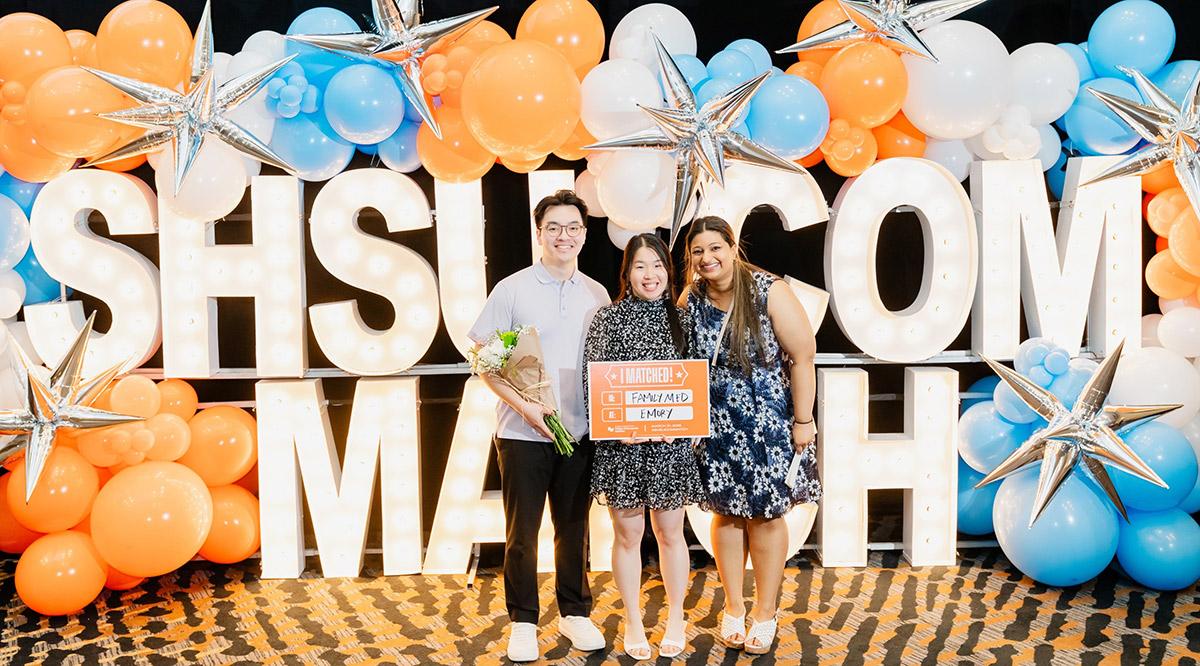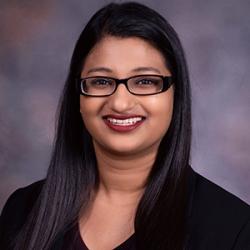Editor's note: The opinions expressed by the author do not necessarily reflect the opinions of the AAMC or its members.
I’ve never been a huge fan of flying. There is something about being thousands of feet above the ground in a large hunk of metal that has a way of reminding you of your own mortality. As a child, I always wished I could simply teleport from Point A to Point B. (Growing up with Harry Potter and the magic of floo powder and apparition certainly didn’t help.) It is perhaps no surprise, then, that my first time flying as a solo passenger was not until March of this year; I finally braved the trip from New Hampshire — where I attend medical school at Dartmouth — to Houston, to attend my best friend’s Match Day ceremony.
While I dreaded the flying aspect of the trip, I was excited about every other part. As I packed, I reflected on one of my earliest memories of my best friend, Wendy Zhuo, during our freshman year at Cornell University — we were studying together for general chemistry in a dimly lit, beautiful lounge, filled with Gothic furniture and a grand piano, in Balch Hall, the all-women’s dorm where we both lived. Over the years, we have gone through all the joys and challenges of our premedical journeys and medical school years together, believing in each other perhaps even more than we have ever believed in ourselves.
When we both applied to medical school amid the turmoil of the COVID-19 pandemic and waited with anticipation to hear back from programs, I mailed Wendy a stethoscope charm to signify that I knew she would be receiving her first real one soon enough. She placed it on her stethoscope on the first day of medical school and has kept it with her through every rotation since.
I hesitated for a moment while I considered whether to bring my own stethoscope on the trip to celebrate Wendy's Match Day. I often carry it with me to quell the what-ifs at the back of my mind, but the idea of something happening on a flight that required a fourth-year medical student to take charge seemed like a scene out of Grey’s Anatomy.
As I headed off to Boston Logan International Airport via the Dartmouth Coach, I thought about the other reason this trip was particularly meaningful: I had decided to take a research year after finishing most of my fourth-year rotations and would be applying to internal medicine residency programs in the fall. While this meant Wendy and I would not be experiencing Match Day together in the same way we have shared our other milestones in medicine thus far, it also gave me the unique opportunity to be there for her ceremony in person.
As fate would have it, my flight from Boston to Houston had me seated next to a passenger who was even less excited to fly than I was. Waiting for takeoff, we shared stories about our lives in New England and our travel plans, to pass the time and quell our nerves. In a moment of movie-like irony, the captain came on over the loudspeaker and announced that a technical malfunction with the plane was causing a delay.
We looked at each other in disbelief and, after a moment of silence, had to laugh. She leaned over, saying, “I just hope that I sleep through this flight.” In a cross between attempting to lighten the mood and sharing the thoughts that I am sure every medical trainee has when they board a flight, I responded, “I just hope no one on this flight needs medical attention.… I didn’t bring my stethoscope!” Of course, there were so many more reasons for that hope than just not having packed my beloved hunter green Littmann Cardiology IV, but it made the woman smile. Little did I know that this simple exchange would foreshadow my trip back home.
On the flight back from Houston, about a half hour after takeoff, one of the flight attendants asked for a medical professional over the intercom. Several moments passed, and she stood and looked over the crowd, waiting for someone to step forward. There had to be an emergency medicine attending on the plane, I thought, or a critical care fellow, a general surgery resident, an EMT — someone, right?
As a few more moments passed, I hesitantly unbuckled my seat belt, stood, and made my way to the flight crew to let them know I was a fourth-year medical student available to help if no physicians were present. They waited for a few more moments, and then let me know that it was just me and a nurse available to help.
One of the flight attendants pulled me through a crowd that had congregated around the passenger in distress, announcing that I was a doctor. I clarified that I was a fourth-year medical student and took in the scene around me. I gathered that a man in his late 50s had become minimally responsive while sitting beside his wife. I found him slumped to the side in his seat, short of breath, and covered in a cold, clammy sweat.
I shook the man by the shoulder and, like I had practiced in so many Basic Life Support classes, asked him, in a loud and clear voice, if he was OK. He was able to tell me his name and the word “flight” in response to where he was, before closing his eyes and returning to a low arousal state. During this quick exchange, I had one hand around his left wrist to take a radial pulse and was quietly observing his breathing pattern as the flight crew quickly started supplemental oxygen.
I suspected he was likely suffering from airline syncope (or, to be precise, pre-syncope) and moved him into the aisle and raised his legs into Trendelenburg position (above the level of the head). From there, I gathered collateral information from his family, worked with the nurse on board to take and assess his vital signs, and performed a ministroke assessment, grateful I had finished my neurology clerkship two weeks earlier. And I listened to his heart and lungs through what I can only describe as a toy stethoscope included in the first aid kit aboard.
Within a few minutes, he began to recover and speak to us in complete sentences. I sat him up, gave him some sips of juice (once I knew he was not hyperglycemic), and kept an eye on his blood pressure as we slowly moved him from supine, to sitting, to standing, for approximate orthostatic blood pressure readings. As he returned to baseline, his wife came over and thanked me with wide eyes, squeezing my arm as if to try to make me feel just how deeply she meant the words. I sat next to my patient for the rest of the flight and engaged him in conversation. I learned that he was from the same region of India as my mother, and we began speaking in a cobbled-together mixture of Hindi, Punjabi, and English. Soon he, his family, and even the passenger sitting on his other side were all smiling.
In this moment, I was grateful for the clinical training I have been privileged enough to receive, which allowed me to make a difference for someone during what I am sure was a scary situation for him (and for me as well). But it also reminded me how powerful it is to lean into our shared humanity; kindness can be one of the most healing remedies physicians can provide their patients (or, in this case, their fellow passenger). As I watched the color return to my patient’s face while I spoke to him about where he grew up and heard about the big Punjabi wedding he had just attended in Houston, I could not help but feel the weight of the moment lifting off me.
When I exited the flight, I was surprised to find the passenger who had been sitting nearby waiting for me at the gate. She was holding back tears as she thanked me and told me that I was the kind of physician we all need. While she was grateful to me for taking charge during a scary situation, what struck me most was how much emphasis she put on my kindness.
As trainees, we often spend much of our time worrying about whether we know enough of the scientific side of medicine. But this experience was a poignant reminder that the very thing that drew me to becoming a physician is still the most important thing of all: the profound level of trust and sense of connection we have the privilege of sharing with our patients.
Looking ahead to residency, I know that I can trust in my clinical skills and training — but, after flying solo in more ways than one, I am also reminded that there are so many tools in my toolkit that look nothing like a stethoscope.
Next time I fly, though, I’m packing one — just in case.

